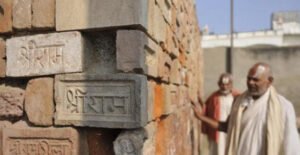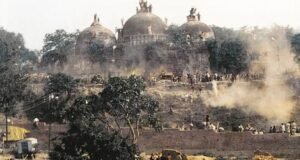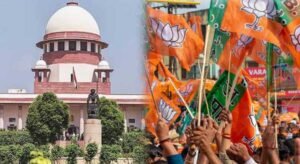Ayodhya, a holy city on the bank of river Sarayu in Uttar Pradesh, is steeped in myth, history and religious significance. From Mahabharata to Ramayana, Ayodhya has become a significant pilgrimage site for the Hindus. Apart from this, it’s renowned for being the birthplace of Lord Rama, the Hindu deity.
The Ram Mandir, rising grandly in Ayodhya, is more than just a temple. But the story of this temple is complex and multifaceted, it holds religious significance, historical controversy and legal battles.
Demolition of Ram Mandir

The saga of Ram Mandir’s debate stems from the time when the Mughal emperor Babur invaded North India in 1525 and conquered a substantial part of northern India. Then he came to know about Ayodhya and Lord Rama, which is Hindu’s biggest place of worship, and decided to construct the Babri Mosque, by destroying the pre-existing temple of Lord Rama at the site, setting a stage of tension for centuries.
Disputes over Ram Janmabhoomi
The tension between the Hindus and the Muslims arose in 1853, leading to the division of the mosque’s premises. For the next two years, Hindus attempted to build the temple on the site but did not require permission from the government.
Then, in 1946, Akhil Bharatiya Ramayana Mahasabha (ABRM) started a campaign for the possession of the disputed land. Following this, Santh Digvijay Nath of Gorakhnath Math joined the ABRM and organized a nine-day continuous recitation of Ramcharit Manas, at the end of which the Hindu activists broke into the mosque and placed the idols of lord Rama and Sita, which created chaos among the religious communities.
Demolition of Babri Mosque with Rath Yatra

In the 1980s, the Vishwa Hindu Parishad (VHP) formed a committee and launched a new movement to erect the temple dedicated to infant Rama (Ram Lalla) at this spot. And the Bharatiya Janata Party (BJP) became the political face of the movement.
The BJP leader L.K Advani began the “Rath Yatra” from Gujarat’s Somnath to Ayodhya in Uttar Pradesh in 1990, to make people aware of the Ram Janmabhoomi issue and raise support for building the Ram Mandir in Ayodhya. However, the yatra led to communal violence in Uttar Pradesh and many other cities, prompting the Bihar government to arrest Advani. After this, thousands of Kar Sevak (Hindu activists) climbed the walls of Babri Mosque and demolished it.
Then, the Liberhan Commission was formed by the government of India to investigate the demolition, reported that the Rashtriya Swayamsevak Sangh (RSS), Vishwa Hindu Parishad (VHP), Bajrang Dal and the BJP bear the responsibility for the demolition of the mosque.
BJP’s Dominance and Supreme Court’s Verdict

After the BJP succeeded in the election and came to the power of dominance, the file of dispute over the Ram Janmabhoomi was opened on August 6, 2019, when the five-judge bench of Justices, headed by Chief Justice Ranjan Gogoi, started the final hearing on the case. And, when the hearing came to an end, the bench granted the contesting parties to file written notes. After all the hustles, the Supreme Court ordered the land to be handed over to build Ram Mandir.
After a victory of Hindus over the disputed land, the Government of India announced to build Ram Mandir, in Ayodhya on February 2020. Meanwhile, the temple is under construction, expected to be completed in next year.
Year 2024, fruitful for all Hindus
Following the inauguration of the first phase of the construction by PM Modi and Chief Minister Yogi Adityanath in 2022, in which he laid the foundation stone for the “garbhagriha” of Ram Mandir in Ayodhya to mark the beginning of the construction, the temple is expected to be completed in 2024.
As the temple holds immense religious and cultural significance for many Hindus, the construction and inauguration of the temple will represent the fulfilment of a long-held desire for many devotees and to celebrate the faith and history of the Hindu community.












Comments 1